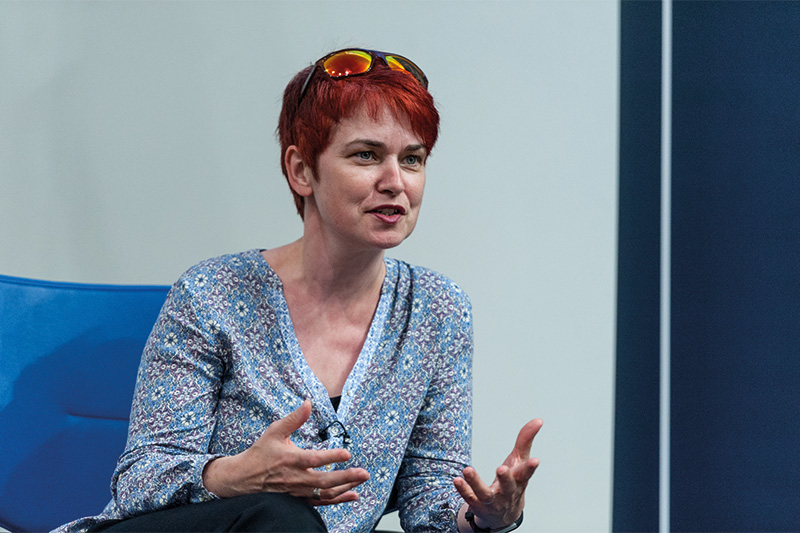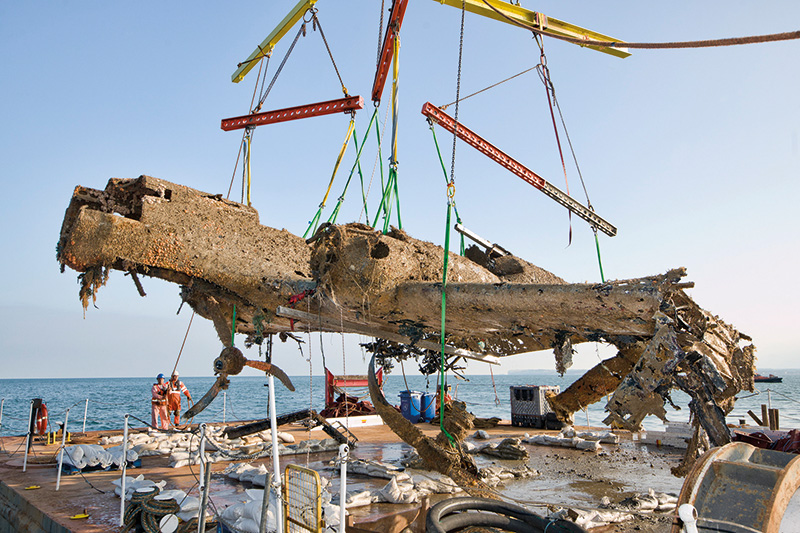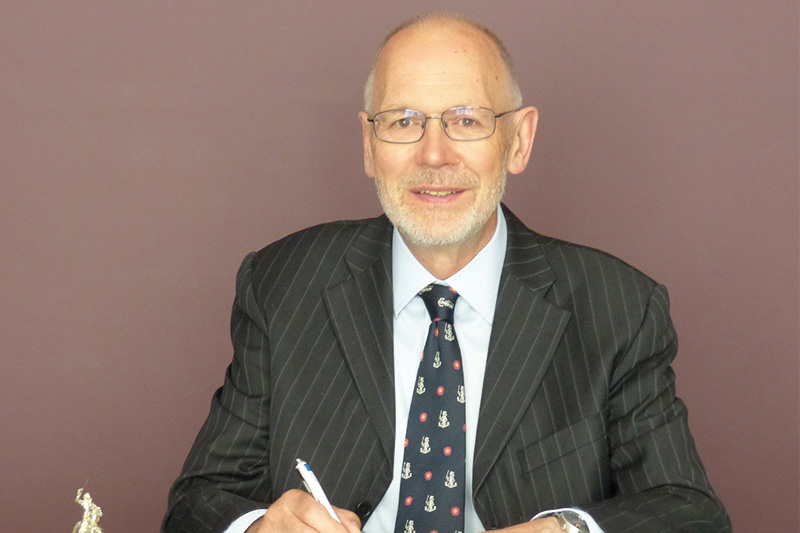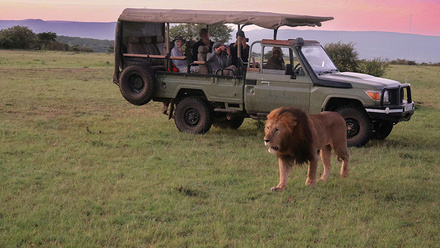Piecing it all together - 700 years of the Worshipful Company of Armourers & Brasiers
Professor Mary Ryan CBE FIMMM has taken on the role of the first academic Chair to celebrate the UK Worshipful Company of Armourers & Brasiers’ 700th anniversary supporting materials science. We discover her multifaceted career and how her new position marries history with modernity.

‘I’m not expecting you to have memorised my CV,’ says Mary Ryan, Professor of Materials Science and Nanotechnology, and Vice Provost for Research and Enterprise, at Imperial College London, UK. This comes as something of a relief early in the conversation as it becomes clear she wears many different hats. She thankfully exudes an amiable dynamism while still putting you at ease. I congratulate her on her newest hat of Armourers & Brasiers’ Chair in Materials Science at Imperial College London, UK, as well as her recent CBE award.
As the first academic Chair for an institution celebrating 700 years since its inception this year, she has a strong pedigree to follow. The Worshipful Company of Armourers & Brasiers was originally founded by armour makers in the City of London, and its charitable activities are now mostly involved in the promotion of and grant giving to materials science (see box-out p23).
Ryan explains that when her department won the endowment for Chair, her curiosity piqued. ‘Am I interested and what does it mean? What would I do? And then lots of impostor syndrome stuff manifested too.’
She was reassured by how thorough the application process was though. ‘I think [that] is always important – you need to feel it’s thorough, and transparent and fair and rigorous. I didn’t just get it, I had to work for it.’
One reason she was interested in the role she says is, ‘that sense of legacy and how you build on all those traditions, which is really about exploring how materials are used and developing new ways of thinking about materials and the transition that the company has been through over centuries. The Armourers & Brasiers holds a position of strength, security and resilience.’
She explains that those materials that were dominant when the organisation was founded – such as iron, copper, steel and precious metals – are those of increasing importance now. ‘They're becoming increasingly critical to the future economy and the energy transition.
‘Those materials are still relevant, necessary going forwards. But in entirely different ways, in unrecognisable ways. And that’s one of the things that my group does – we work on nanoscale materials.
‘Historically, using these materials was a craft… And 700 years later we are not simply able to manipulate materials at the scale of the human, we are able to manipulate the materials at the scale of the atom and the molecule.
‘That development allows us to do all kinds of innovative things that would have been unimaginable several hundred years ago. We are doing things with materials that you can’t see with your eyes. It would have been magic [to the original members],’ she enthuses.
A position with profile
She pauses when I ask if it matters that the first academic Chair for the Armourers & Brasiers is a woman. ‘That’s certainly an important piece around representation,’ she muses. ‘Because materials science is such a broad church, the demographics are quite different depending on where you look.
‘Metallurgy is still quite male dominated whereas biomaterials has got a much more balanced demographic, at least on gender. We’ve got this whole range of sub-groups that are quite mixed.’
She is positive about the trend she has personally experienced. ‘I have been at Imperial for nearly 25 years and there's been a transformation in my department and a transformation of the community in terms of its approach to diversity. I don't feel like I’m fighting to be seen as a Materials Scientist. I feel like I'm supported.’ She was herself part of that change, having co-founded the Women in Engineering Network at Imperial.
However, Ryan does think there is more of an issue with engineering generally, ‘There’s a huge gender gap in engineering, and this Chair is a position with profile, and I recognise there is a responsibility to that. If I can help other people see that they can also be a scientist and an engineer, then that’s great.’
She continues, ‘We noticed that in our department – and I think many of the materials departments are the same – we have almost an inverse pipeline. From undergraduate to postgraduate to postdoctoral researcher, we increase the number of women at each step…There’s less of an awareness of what materials is as a discipline at the undergraduate level.
‘At the postgraduate level in particular you bring in all different disciplines…from Chemistry, Biology, Chemical Engineering and Aeronautics Mechanics. I even had a fabulous student who had studied Classics as an undergraduate. That huge cognitive diversity means that everybody is bringing in different perspectives and that adds to creativity.’
Visibility and support
Ryan recently presented to the Court at the Armourers Hall in the City of London to discuss her research after being awarded the position of Chair. The Court is the senior council that oversees the Armourers & Brasiers’ Company.
‘Going to Court was just like going to give a presentation,’ she says. ‘They are not necessarily materials scientists so…having to lecture to students, talk at conferences, and do outreach work makes you ready to explain what you do to a broad group of people.
‘The meeting was also about demonstrating a shared commitment to furthering the cause – that materials are critical – and to broaden the impact of what they [the Armourers & Brasiers] do and what we do at Imperial.’
It is easy to see that communicating her work is something she does a lot of and enjoys. If she is self-conscious or self-editing, it doesn’t show. Even through the staccato medium of the video call she has an easy, open manner.
She juxtaposes her recent foray to the Court with her first time at the company’s site, as a new lecturer 20 or so years ago for a dinner. Amusingly, she reflects that she is not sure who has changed the most, but that she is certainly more confident in herself now. ‘It was shockingly intimidating back then because it’s this great old space…everything’s very grand. It’s a little bit ritualistic.’
Now the question she faces is, ‘How do you take the best bits of that kind of an organisation and open it up, so people don't feel like there’s a barrier?
‘For the last 20 or 30 years, the Armourers & Brasiers have been engaging with materials, funding outreach activities and students to travel…I found them very welcoming. There is a lot of excitement and ambition around how the Company can progress society through materials. I could see how the work that I do would map both their history and their ambitions.’
She is now enlisting some PhD students at Imperial to think about outreach activities linked to the Company’s collection of armour and metal objects.
The endowment of £1mln from the Armourers & Brasiers, with money also invested by Imperial, opens up new opportunities.
‘It enables me to try a few things on top of student activities, and to generally support new ideas – it’s not enough money to run a big project, but it’s like a little seed fund to start them off.
‘It gives us an opportunity and ability to test things out that might work or might just be crazy ideas. It gives me a little bit of flexibility, but I think it’s more the visibility and the support that is generated from it.’
How a specialist becomes a generalist
As she sees it, there is a broader issue with academic publishing. ‘We’ve almost developed a set of academic criteria around materials and devices where you publish the most efficient thing – the highest fill factor fuel cell or the highest capacity battery.’
Her group at Imperial is espousing the approach of ‘the best efficiency over the longest lifetime, with the least use of critical materials, that can be manufactured in a sustainable way, that can be recycled.’
As well as battery materials and cooling research, Ryan is heavily involved in healthcare. ‘We had promising results on how you might treat bacterial lung infections, with nanoparticles for example.’ The idea of local delivery with better targeting and a lower overall dose has been a move in healthcare in recent years. However, again, her team take a holistic approach. ‘What we’ve done is a little bit different – the nanoparticle is also the therapy. So, you don’t just attach the drugs to a particle and deliver it, the nanoparticle itself has a target role in that. And then that requires you to understand the material, stability and the solution.’
From healthcare to battery technology, to heritage conservation work, to initiatives focused on sustainability, how does she balance all these different projects? ‘You have to be able to talk to all these different people to deliver the impact of the materials. One day I can be talking to a clinician and the next I can be talking to a conservator…I only know English but I'm a multi-linguist.’
In her work with museums, the University team shares knowledge and experience of what can be done when there is a challenge with a material. ‘There is a huge amount of assembled knowledge of treatments that work and how to manage materials, but if there’s something that’s new – a new material or problem – access to facilities to try and study that is quite a challenge. Can you simulate that response in a piece of new material?
‘I don’t see myself as a heritage scientist, I see myself as a material scientist who works with museums on some of these cultural history challenges.’
How did she find herself doing all this heritage work? ‘It’s been a little bit evolutionary, because I understand a lot about material stability in different environments.’
Landing the flying pencil
Ryan describes her largest heritage project as assisting the RAF Museum in Shropshire, UK, in raising and preserving the World War 2 Dornier DO17 German bomber plane, known as the ‘flying pencil’.

‘After the war, there weren’t any in existence anywhere because material was scarce so everything got reused, recycled or lost in the sea. Aluminium corrodes in sea water. I like to say the barnacles saved this plane – it got covered in all this sea life that formed a barrier.
‘The surface, however, was chemically altered and ready to be activated, as soon as it was exposed to oxygen it was likely to corrode instantly. We had to work out how to stop that and then how to remove this surface layer and stabilise the whole thing.
‘A little sample was put in a tank and brought to my lab. We did a whole bunch of tests on this piece and then they brought the whole plane up for preservation and it’s still there!’ She says with her fingers crossed.
The project also made her realise she needed to talk about the story behind her work to reach a wider audience. ‘I’d written what I think are quite nice papers; we have done lots of work and nobody ever stopped me on campus to talk about it. That opened my eyes a little bit to using tools for more engagement.’
This is typified by her work with the Victoria & Albert Museum in London, UK, for example. ‘It has been around how you use materials and artefacts to both tell stories and to help our own students engage slightly differently with their thinking about materials,’ she shares.
Materialising a career
Ryan found her way into materials science gradually, initially studying Maths and Physics for her undergraduate degree. ‘I had no idea what materials science was, I had never heard of it. The part I liked the best was condensed matter physics, which is largely materials science…Even towards the end of my undergraduate studies, I still didn’t quite know what it was. And I was in Manchester and there is a big materials school.’
So why and how did she end up doing a Masters in corrosion? ‘When I went to the interview at Manchester, they had just bought a scanning tunnelling microscope...I still remember the first time I went and put a piece of graphite in and saw atoms on the surface and thought, ‘well, this is fun’. That was probably it. That was the day I decided to do research.
‘Doing that Masters course taught me things that I’ve never even encountered – metallurgy, electrochemistry, materials processing – all that stuff that you don’t really see in a Physics degree.’
After her PhD she went to the US and worked at Brookhaven National Laboratory. She recalls, ‘Everything we were doing was inherently nanoscale, but nano wasn’t really a thing. We needed to do things at the nanoscale to understand the physics of the interface.’
Ryan adds, ‘The national lab system is brilliant in many ways. There is a lot of freedom, funding and flexibility around your own time. You can choose your own directions, but you are constrained to a certain size of programme typically. I wanted to have a bit more independence, to be able to grow my group and try new ideas.’
Moving thereafter to a university such as Imperial offered ‘less certainty, because you’ve got to win more grants, teach, and build your own group, whereas in the national labs system, it is quite protected – they give you some money and say go do some work.’
Initially, she struggled with the move. ‘For a few years, I wasn’t sure I had made the right decision. The funding situation is a challenge. Competing for grants is hard plus learning how to juggle teaching and admin and research at the same time. But now I have been here for a long time, I love Imperial.
‘It’s an interesting place. You’re at the centre of lots of activity, and lots of people come to collaborate with us. It is easy to do interdisciplinary work across departments and across faculties.’
She continues, ‘It has a very specific flavour of making an impact. Do great research and then do something with it. I think in part because of the way it was founded – from the Great Exhibition. It was very much about how to work with industry, how to demonstrate that research has an impact on people in society and prosperity – that is still in the DNA and you kind of feel that excitement, not just discovering something new but doing something with it. And that’s not just commercialising it afterwards – social enterprise, policy and engagement are all different ways that you can think about knowledge transfer…making a difference to people.’
Proactive choices lead to prosperity
Making a difference also comes from supporting the next generation, insists Ryan. ‘You shouldn’t forget what it was like when you started and you should actively help and sponsor people to learn through the process, and bring them on-board with programmes, projects and grants that you are writing, so they can learn from you and hopefully have a faster transition.’
And going forwards, how does she see materials science developing in the next 50 years or so? ‘I think there’ll be a wholesale change in what we think waste is and what resources are and how those are utilised together, and I think catalysis is going to be part of that. So, how you extract components and reutilise them and transform them in energy-efficient ways.
‘We talk a lot about quantum…We’ve done the computing, the theory, the algorithms, but not the materials piece, to actually realise all the computing power and energy-saving benefits…a huge amount of materials investment and development is required.
‘There will probably be a few disruptive battery chemistries that emerge – for example, transforming CO₂ to something useful.’
Does she have any concerns about the demand-supply gap for critical materials that is predicted to grow? ‘It worries me a lot actually. One of the things that we talk a lot about is systems-level thinking around sustainability and resource. If you are trying to build a new battery, you should down-select your materials choices before you even start. We shouldn’t be using cobalt; we shouldn’t be using nickel. Why are we? How are we going to create those chemistries that work?
‘We are not quite there yet, but I think we will have to get there – the place that does it proactively, rather than reactively, will be where the prosperity lies.’
Professor Mary Ryan’s inaugural lecture as academic Chair for the Armourers & Brasiers will be held on Wednesday 2 November 2022, 17:30-19:00. It is free to attend, but advance registration is necessary.
Showing their mettle

The Worshipful Company of Armourers & Brasiers is celebrating its 700th anniversary this year. Having weathered many historical epochs, the Company today exists in a very different form than when it was created in 1322 to protect the standard of trade for armour makers. Its activities are now mainly focused on the promotion of materials science through grants and awards.
With 110 livery companies in the City of London, the Armourers & Brasiers is one of the oldest livery companies in the City. Originally, the Company regulated the armour trade and provided support and training, as well as caring for members when they fell on hard times. That survived extremely well until about the 16th Century. For example, it made armour for King Henry VIII for jousting tournaments – this activity survived into the reign of Queen Elizabeth I.
Even today most members inherit their membership from a parent. While other members, such as the current Chair of the Company’s Materials Science Committee, Mike Goulette, have joined by invitation because their expertise is valued by the Company.
As part of events to mark the 700th anniversary, the Company has gifted £1mln to an endowment fund for a Chair of Materials Science at Imperial College London. The endowment is a match fund activity – but not precisely matched by the University. Funds came from the Company and the Gauntlet Trust – the independent charity within the Company that manages a portfolio of grants.
How does any singular body last for such a biblical amount of time?
We are not the most richly endowed of the livery companies…but we punch above our weight in terms of charitable activities, particularly for materials science.
We survived because we adapted – we started with a very strong trade, moved to a different one, and now 70% of our charity activities are materials science focused, with the remainder alloted to our general charitable activities.’
How has the company changed in that timeframe?
It has pivoted in the sense that the original implementation was about the technology. Fundamentally, we were metal bashers. We were making steel in the City of London 700 years ago. And today, what we are supporting is the science and manufacture of materials across not just the UK, but across the world in many ways. So, it has pivoted in a very positive direction.
Why set up an endowment for an academic Chair to mark the 700th anniversary?
It was over and above what we would normally do. It was a significant step beyond. And something which we felt was a great thing for the Company, but also a great thing for whichever university we chose at the end.
It was something which would clearly be both prestigious, but also a legacy and an enduring memory of the 700th anniversary.
While Imperial manages the Chair, the Company retains a seat on the selection committee. There is also a proviso for engagement with the Armourers & Brasiers. This is a low-intensity involvement if you like, we are not trying to take up huge amount of the Chair’s time, but we do want them to feel part of the Armourer’s family.
The Company gives £25k annually to support the commercialisation of UK materials science research. This year, the ArtioSense project won the Venture Prize to develop smart sensors for surgical implants. Was the criteria different for the 700-year anniversary?
We chose the winner on the basis of our usual criteria which are excellence, and the capability of the individual founders as well.
We think interviewing face to face is very, very important. Because it’s the quality of the individuals in a start-up that really makes the big difference between whether it’s going to work or not.
What we are trying to do is to help these companies get off the ground. And what we find is that if they get the £25,000 from us with our name on it, that helps them to then go and attract additional funding. And they can demonstrate they’ve been through a rigorous process. Our name is known in the community as a significant supporter of materials science.
How does the company stay in touch with award winners?
Every year, we have a competition in the hall where we invite some of the alumni who won our materials science awards to give what we call an elevator pitch, a three-minute talk. So, no slides, just straight off. And that's a great learning experience for the participants. The event also serves two objectives. One, it keeps us in touch with the alumni, but also it helps to excite the members of the Company who aren’t materials scientists or materials engineers, about what this wonderful subject is all about.
What does the future look like?
We have just done an overall strategic review for the Company, looking at where we are going in the next 20-25 years. And, within the framework of that review, we are going to do the same thing for the materials science aspects of the Company. We are not into sudden change. We will continue to support materials science, from schools to postgraduate, and continue to support materials science start-ups that we think are excellent with a real chance of succeeding.
If the Company is still here in 700 years, it is going to look very different. That is inevitable.
What role can the Armourers & Brasiers play in an energy transition?
We are the biggest non-industrial, non-governmental supporter of materials science in the UK. We think passionately that materials science is fundamental to everything in the engineering world. The solutions to net-zero are going to come very much on the foundation of materials science.
What we are trying to do is to help support materials science for the betterment of the UK and humanity in general. So, inevitably, the whole issue of the environment and zero emissions will be part of that. Clearly that is something that is not just exercising the Armourers & Brasiers Company, but the industrial companies that we are working with and the universities.







